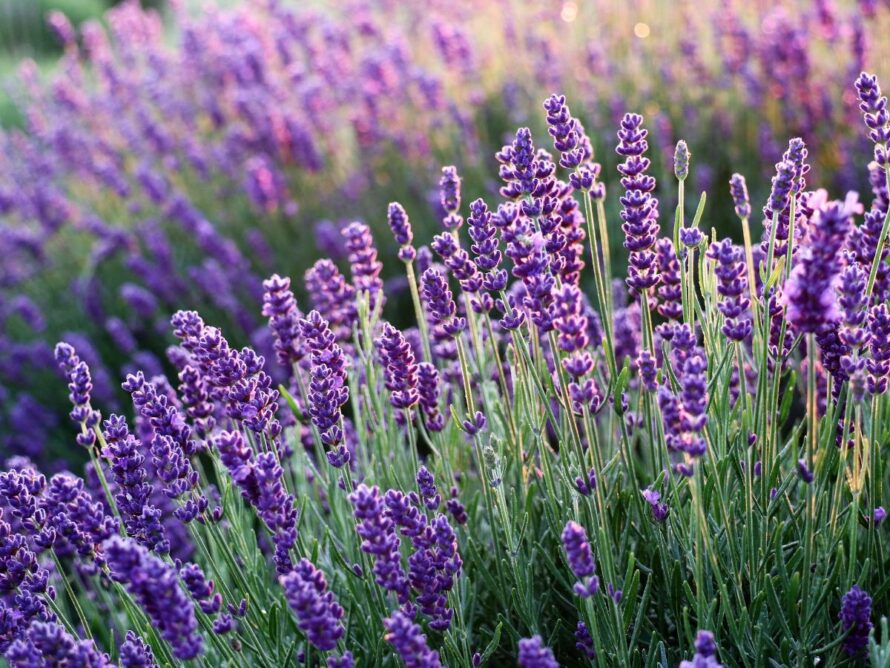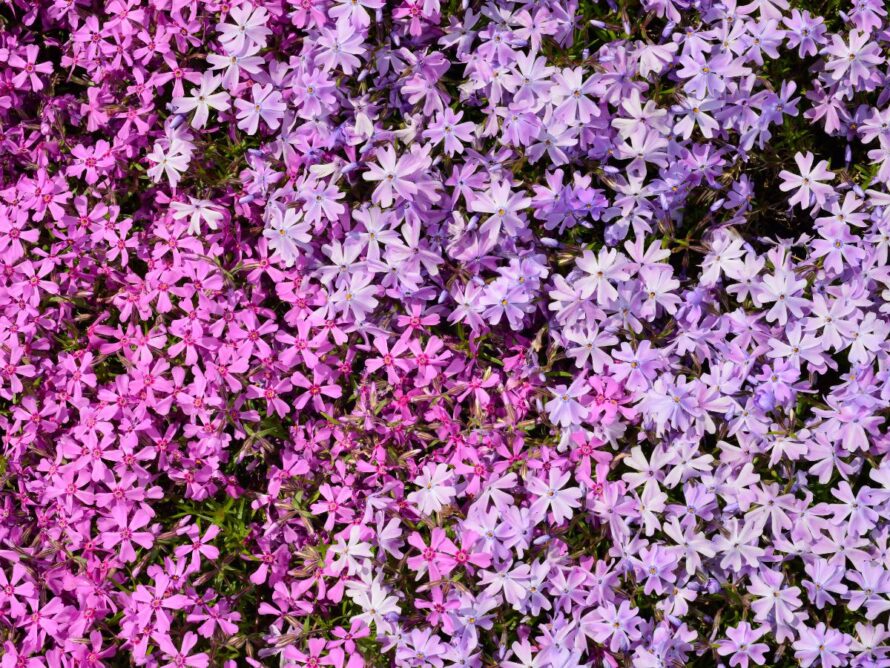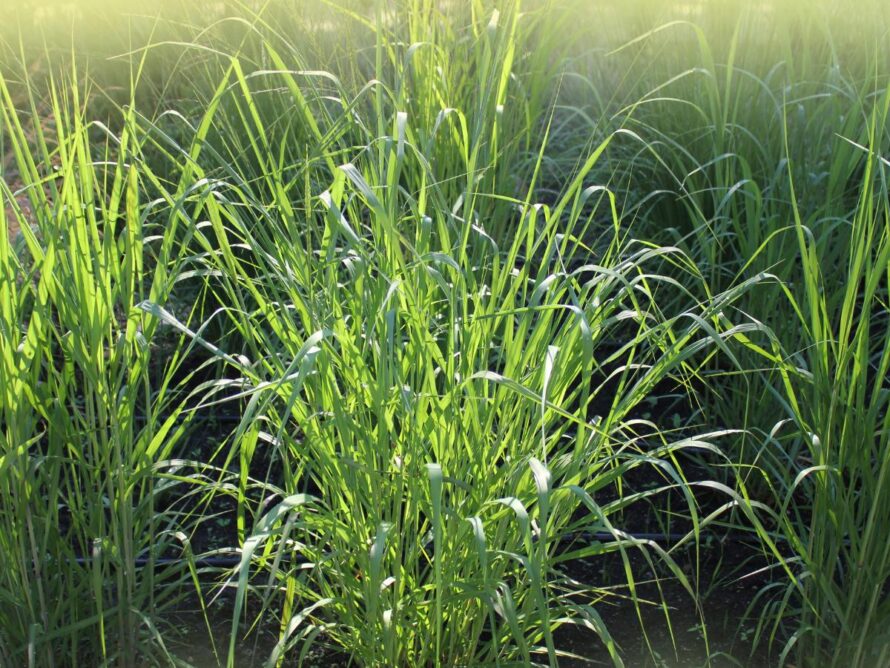If you want to reduce your landscape’s watering requirements, or you live in a place where droughts are common, xeriscaping might just be what you miss.
Xeriscaping is a garden system focused on conserving water and needs little to no supplemental irrigation. This gardening style usually involves drought-tolerant plants that can withstand infrequent maintenance, meaning less work for you.

What is Xeriscaping?
Once established, xeriscaped landscapes require no additional water beyond rainfall since they depend on what the natural climate offers for the plants to flourish.
You can achieve this garden type in numerous ways, and it will look different depending on where you reside. For example, your garden could look like a cottage-style blend of colorful wildflowers and grasses or more like an exotic desert landscape with huge boulders and cacti.
With that said, here are 12 amazing xeriscape backyard ideas to improve your garden aesthetic.
Take a look!
1. Go for a Low-Maintenance Rock Garden

Rocks and boulders inhibit evaporation, trapping moisture in the ground. They’re also maintenance-free, just like any other hardscape element. Fit various boulders together to create amazing focal points in your rock garden, before adding some plants.
Some excellent plants for rock gardens include succulents and cacti. Drought-resistant herbs and wildflowers are also perfect for adding variety and visual interest.
One thing you shouldn’t miss, though, is colorful ground covers spilling over the rocks. Plant campanula, creeping phlox, lamium, or creeping thyme, and watch them as they grow majestically in those small crevices between the rocks.
NB: Take pictures of natural rock groupings you admire to help develop your xeriscape backyard ideas before recreating them in your rock garden.
2. Opt for Xeriscaping Annuals

Annuals last only for a year, and you seed or plant them during spring. They grow and bloom in summer and fall, and you start over the following year. Here are a couple of gorgeous annual species that will elevate your xeriscape backyard:
- Creeping zinnia
- California poppy
- French marigold
- African daisy
NB: You can save water by grouping plants with similar water requirements.
3. Consider Mulching

Xeriscaping can’t be complete without some mulch in the picture. Mulch helps to keep the soil cooler and slows down evaporation, making it essential to xeriscape gardening style. Other benefits of mulching include:
- Adding curb appeal and giving your landscape design a gorgeous, finished look.
- Limiting weed growth
- improving fertility and structure
There are different types of mulch; crushed stones and pine bark look very different. Consider the outlook you want to achieve when choosing a mulch type:
- Incorporate shredded bark into layouts inspired by classic English gardens and cottage xeriscaping
- Use gravel to spread around rosemary and lavender in a Mediterranean layout.
- Stone mulch is ideal for rock gardens and designs centered around succulents and cacti.
NB: Some mulch contains herbicides, pesticides, or dyes toxic to animals and soil. Ensure you select only natural, sustainable options.
4. Bring some Mediterranean Charm

Mediterranean plants native to areas such as Spain, France, Italy, and other European countries are excellent for adding stunning interest to your xeriscape landscape. Some delightful, drought-hardy herbs that thrive in well-drained soils and full sun include:
- Lavender
- Oregano
- Rosemary
- Thyme
Using herbs is an inexpensive way to incorporate Mediterranean fragrances into your xeriscape garden and give it an amazing smell. Also, you can use them for cooking, so it’s a win-win!
Oregano and thyme repel pests and attract butterflies and bees. Rosemary and lavender fragrances have been associated with calming the mind. Since they can also be used in your delicacies, a Mediterranean-inspired xeriscape garden is the perfect option for your backyard culinary aficionados.
NB: Plant your lavender along pathways to enjoy the sweet smell as you walk around your garden.
5. Design with Groundcovers and Ornamental Grasses

To achieve a xeriscape design that flourishes with little water, you’re going to have to say goodbye to that lush green lawn gracing your outdoors. Replacing your lawn with stone, sand, or gravel in high-traffic areas will drastically reduce water usage.
Use ornamental grasses and soft, low-growing groundcovers to cover the rest of the ground. Here are some options you can use:
- Creeping Phlox
- Zoysiagrass
- Lantana
- Sweet woodruff
- Creeping thyme
- Low-lying sedum
- Creeping red fescue
- Silver carpet
These plants grow healthy with little water, spread quickly, and need to be trimmed only once a year. You may also need to mow your drought-tolerant grasses, so keep that in mind. Mixing several cultivars will help you achieve the look you want.
NB: Ensure you pick a low-growing species. Some cultivars, like lantana, also have shrub-like species that grow taller.
6. Add Succulent Planters

Displaying a few potted plants will add diversity to your xeriscaped landscape. The soil in pots for growing plants tends to dry faster than the one in the ground; hence, container plants require frequent watering.
However, succulents offer a solution. You only need to water them from time to time, have shallow root systems, and won’t need much space to flourish. Here are some popular succulents for your xeriscape container garden:
- Crassula
- Agave
- Cacti
- Gasteria
- Sedum
- Aloe
Container plants add structure and depth to your landscape. They’re also perfect for extending the garden towards the porch or defining areas in your garden.
NB: Terracotta pots are the best for drought-tolerant plants. The large hole at the bottom and porous material prevent waterlogging and improve aeration by allowing air to flow through the roots.
7. Bring Rustic Charm with Paver Walkways

Garden paths are an excellent option for your backyard xeriscape ideas. They are aesthetically pleasing, functional, and can be eco-friendly when built properly.
Apart from highlighting a chic pathway, they also collect and store rainwater in the soil. Here’s how to achieve a practical paver walkway:
- Overlay pavers on crushed stone to improve permeability.
- Use pavers with space between them. Rainwater will touch the soil wherever you see the ground, absorbing it for later use.
- Stay clear of compact concrete walkways; they will seal the ground and create runoff.
- Allow tiny plants to grow between pavers to keep the soil moist.
- If pavers are way off your budget, consider gravel paths instead.
NB: Create a more dynamic design by varying paver sizes. Use natural stones, like slate or bluestone, since they last longer.
8. Add Color with Pollinator Gardens

Bees require our protection now more than ever, as do other pollinators. Incorporating a pollinator garden into your xeriscape backyard design is an excellent way to create a unique eco-friendly landscape architecture.
So, if you love butterflies, lady beetles, and hummingbirds flying around your garden, consider the following flowering plants:
- Caradonna
- Dianthus
- Lemon balm
- Coreopsis
- Black-eyed Susan
- Echinacea
- Hummingbird mint
- October skies
These drought-resistant plants are ideal for flower beds and under xeric trees or edging pathways along the garden.
NB: Check the flowering period of each plant. Bees and pollinators, in general, adore bright colors, so mix your plants for a garden filled with beautiful colors all year round.
9. Plant Perennials

Once you decide to incorporate xeriscaping perennials into your design, choose plants and their place in the yard carefully since it’s a long-term commitment. Here are some popular perennial grasses for your xeriscape backyard ideas:
- Switchgrass
- Mexican feather grass
- Maiden grass
It would be best to plant them along the edge of a patio or pathways.
In the case of perennial shrubs and wildflowers, here are a few examples you can try out:
- Verbena
- Shasta daisy
- Blue false indigo
- Coneflower
- Yarrow
- Russian sage
Once you plant them, water them until they’re established, and trim them occasionally. They will fill your yard with blooms spring after spring.
NB: Pick plants that grow well together and group them in the same area.
10. Use a Rain Garden

A rain garden is a practical solution to a backyard with shallow depressions or sloped land. Rain gardens are usually placed in low areas to collect stormwater.
Runoff will flow from nearby sources such as the patio, driveway, roof, or other impervious surfaces before drying out in less than 48 hours. However, since the soil is prone to getting overly moist, use plants that are able to tolerate wet and dry conditions, for example:
- Blue flag iris
- Marsh marigold
- Wild petunia
- Swamp milkweed
11. Recycle Your Rainwater

Rainwater is a gift from nature, often tending to be more healthy for your plants than tap water. Consider building a rainwater harvesting system as you plan to implement your rain garden ideas.
You can use runoff redirected from roof-like surfaces to irrigate your plants. You only need a storage medium like a cistern, tank, or barrel.
12. Cater for Your Dog

If you have a dog in the house, don’t forget to include him in your backyard xeriscape ideas. Dogs love running and playing on natural surfaces, so they won’t mind the grassy lawn being scrapped off. Here are some xeriscaping ideas for your dog:
- Hard sands, soft pebbles, and decomposed granite make friendly paths for dogs’ pads.
- Sand pavers, flagstone, and brick are also ideal.
- Gravel, straw, pine bark, and cedar chips are excellent mulch alternatives; ensure you pick organic options only.
Use drought-resistant, low-growing plants to replace the actual turf grass. Here are a couple of safe options:
- Snow-in-summer
- Silver carpet
- Creeping thyme
NB: Before buying and adding xeriscaping plants to your backyard, check which ones are poisonous to dogs.









